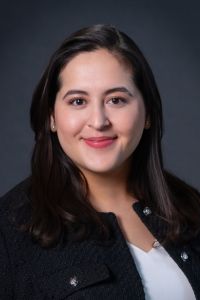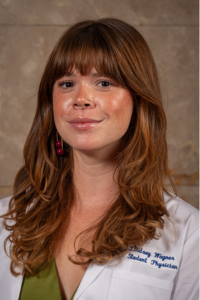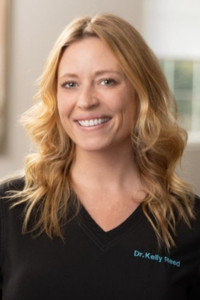Women in Medicine Month 2025: Community Spotlight
Published September 16, 2025
Inside OME
Women in Medicine Month is an opportunity to elevate the voices of women within the osteopathic medical education community. Each year we invite our community to share reflections about what Women in Medicine Month means to our community and why they celebrate. If you'd like to share your own story, please reach out to editor@aacom.org.
Honor and celebrate Women in Medicine Month and beyond by enjoying these books recommended by the osteopathic medical education community.

Women in Medicine: Standing on the Shoulders of Giants
by Kaitlynn McClellan, OMS II, University of the Incarnate Word School of Osteopathic Medicine
There was a time when the idea of women in medicine was nearly unthinkable. Now, every September, we pause to celebrate women physicians who have broken barriers and transformed patient care. As a second-year medical student just beginning to find my footing, I wanted to take stock of what it means to be a woman in medicine before I step into my clinical years. To better understand this journey, I turned to two physicians I deeply admire: Carol Browne, DO, current chair of Osteopathic Principles and Practice at University of the Incarnate Word School of Osteopathic Medicine (UIWSOM) and director on the American Osteopathic Board of Family Physicians, who has more than 39 years in practice; and Denise Vera Nemeth, DO, who was named Student Doctor of the Year by AACOM, TOMA, American College of Osteopathic Surgeons and UIWSOM in 2025. She is now in her intern year in general surgery. Their insights, woven with my reflections, paint a picture of both progress and persistence of how far women in medicine have come, and the invisible costs that remain. Read more.
.jpg?sfvrsn=1d0422fb_1)
Guiding Hands, Healing Hands: How Women Mentors Shape the Legacy of Osteopathic Medicine
By Anamaria Ancheta, OMS III, Burrell College of Osteopathic Medicine in Las Cruces
“You want to make sure to stabilize the scapula like this and secure your placement in the glenohumeral joint,” Dr. Kania said as she placed her hands over mine during my first year Osteopathic Manipulative Medicine (OMM) lab. “Can you feel the difference now?” With just subtle movements, she corrected my application of Spencer’s technique and guided me through the rest of the treatment. As we both pulled back and saw the great increase in shoulder range of motion on my lab partner, I sat in amazement at the power my growing healing hands could accomplish. Little did I know that this technique would remain a common thread between us and Dr. Kania would continue to guide my hands in more ways than one. Read more.
 Women in Medicine: Building a Future of Empathy, Equity and Excellence
Women in Medicine: Building a Future of Empathy, Equity and Excellence
By Giana Davlantes, OMS II, and Shereen Aziz, OMS II, Association of Women Surgeons and American Medical Women’s Association chapters, California Health Sciences University College of Osteopathic Medicine
As part of Women in Medicine Month, we asked students, future doctors, medical educators and healthcare providers to reflect on a few short prompts. Their responses highlighted not only the progress women have made in medicine but also the work that remains to ensure equity, empathy and meaningful change in patient care.
One of the clearest themes was how the growing number of women in leadership roles has already reshaped the medical landscape. Read more.

Women in Medicine: A Retrospective
By Lindsey Wagner, OMS I, Touro College of Osteopathic Medicine - Harlem
Entering the first year of medical school, you are inundated with a breadth and depth of information that, in its infamy, is compared to “being thirsty and attempting to drink from a fire hydrant.” Synthesizing so much material leaves a narrow margin for interrogating how it migrated from microscope slides to the Microsoft Slideshows of your lecture halls, and who contributed to the foundations of medicine and its advancement. Many people, when asked to conjure up images of scientists, doctors and researchers, picture male figures. In reality, many of the scientific contributions and medical advancements we recognize today have been driven by women, yet their names have remained at the periphery of conversations or are shared as fleeting factoids rather than garnering the accolades and credit that so many of their male peers have collected. Read more.

Finding My Place in Medicine
By Kelly Reed, DO, FAAD, FACMS, FAOCD, board certified dermatologist and fellowship trained Mohs micrographic surgeon
Even after years of training, as a woman physician I sometimes still hear the same question.
“Excuse me, is the doctor here yet?”
I’ve lost track of how many times I’ve been asked that question, often while I’m standing right there, introducing myself as the physician. Early on, it stung. How could years of sacrifice, study and sleepless nights be overlooked in an instant? But over time, I’ve learned that every moment like this is a chance to redefine what a doctor looks like and to remind myself that I belong in the room. Read more.
 Finding My Voice in Medicine
Finding My Voice in Medicine
By Ayanda Chantelle Mkhize, OMS II, Noorda College of Osteopathic Medicine
One of my goals in medical school has been to find my voice. I have always believed that my quiet presence allows me to listen deeply, observe carefully and form genuine connections, but I also know that the best advocate for my abilities must be me. During my first year of medical school, I attended an event surrounded by female physicians and was amazed as they shared their trials and triumphs in medicine. They spoke with confidence and generosity while offering mentorship, but I couldn’t help but compare myself. I raised my hand and asked a question that had been on my heart the entire evening: “How did you find your voice?” Read more.
